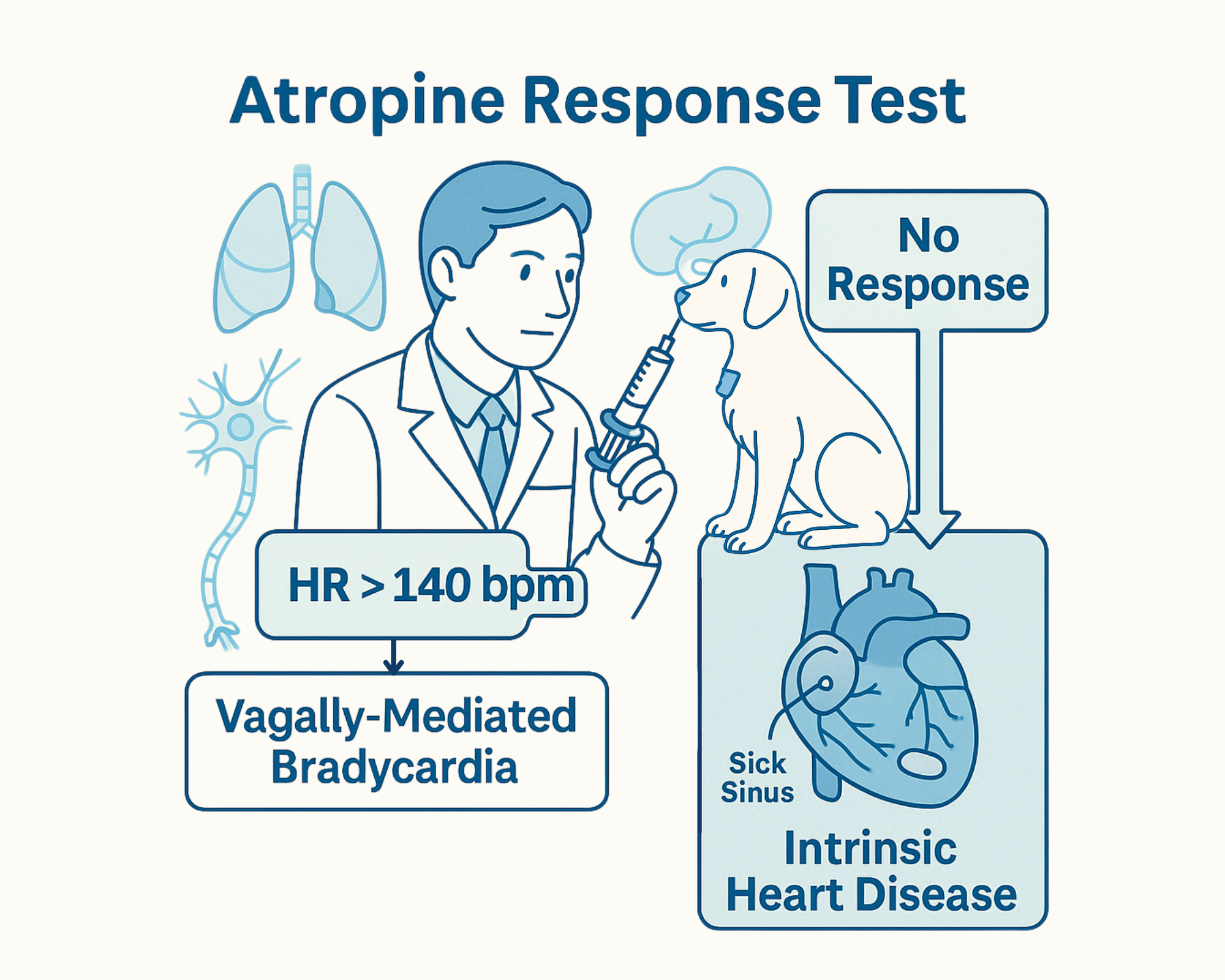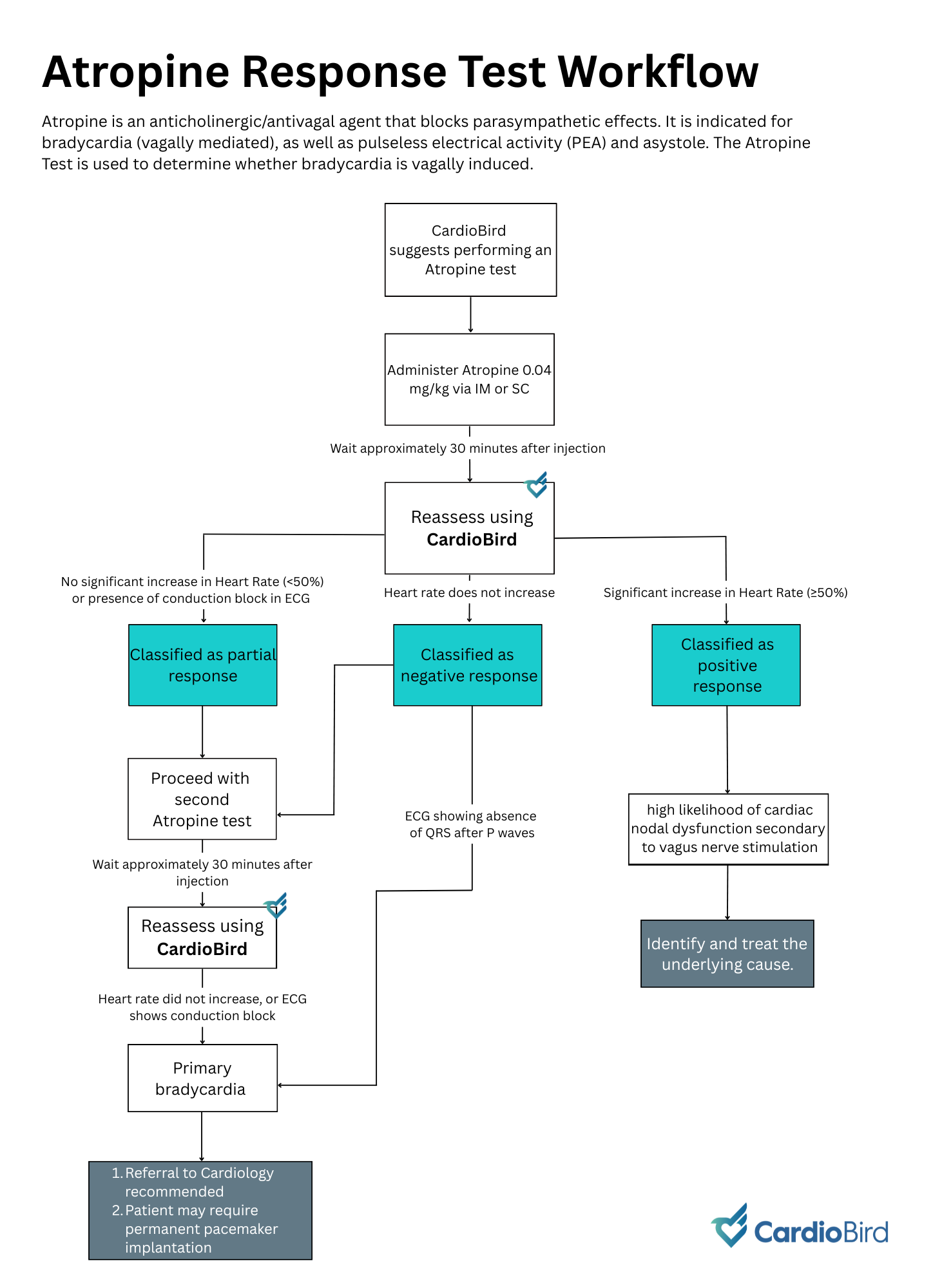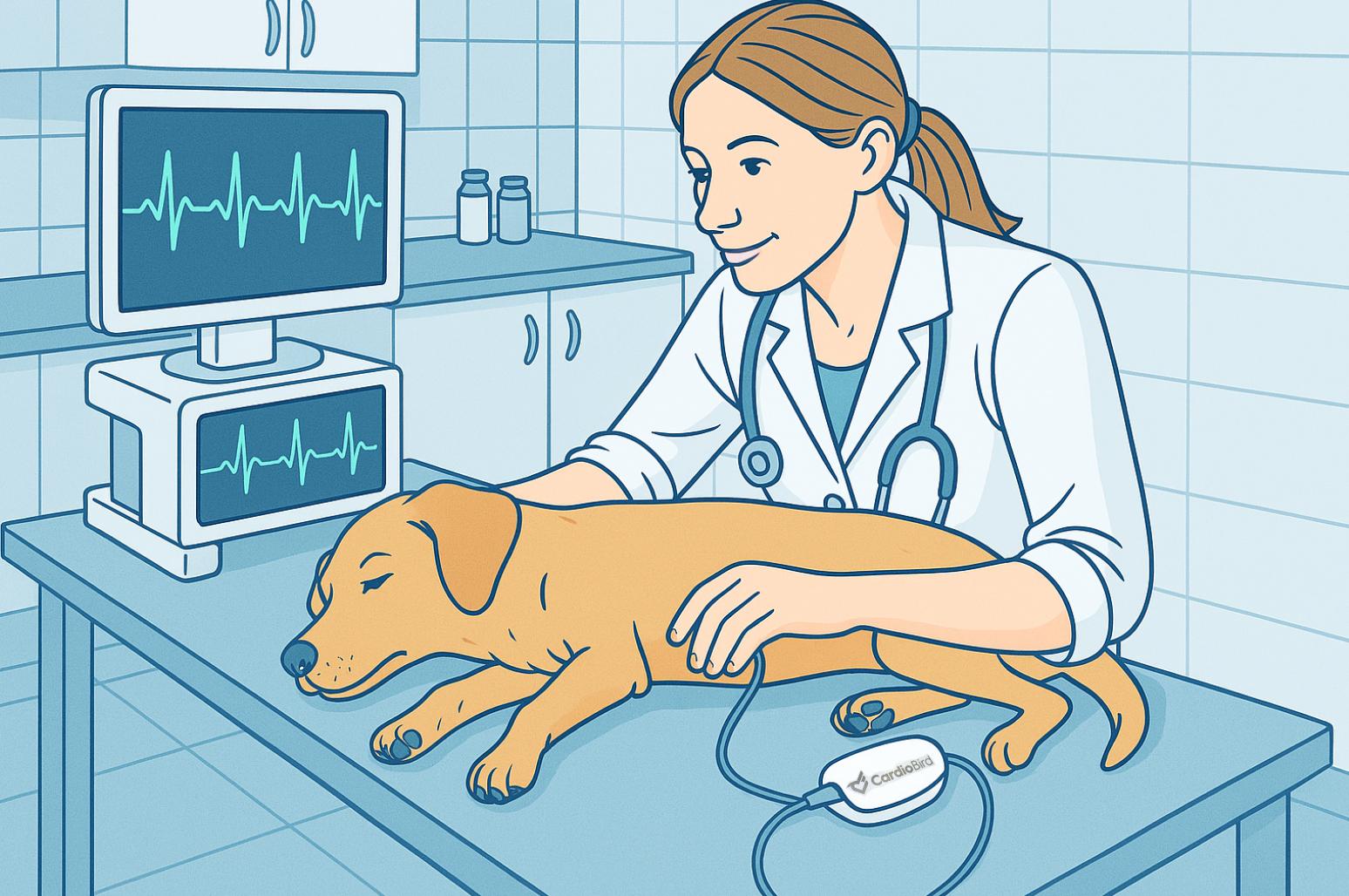🌐 Atropine Response Test: What, Why, When, and How

The Atropine Response Test (ART) is a straightforward diagnostic tool used to help veterinarians differentiate between vagally-mediated bradyarrhythmias (caused by high vagal tone) and non-vagal bradyarrhythmias (caused by intrinsic heart disease). Here’s a simple breakdown of what ART is, why it matters, when to use it, and how to perform it.
What is the Atropine Response Test?
The ART involves administering atropine, a vagolytic drug, to evaluate whether bradycardia (a slow heart rate) is due to excessive vagal tone or another underlying issue. Atropine blocks the parasympathetic nervous system, which can help “unmask” the true cause of bradycardia.
If the heart rate increases significantly (to >140 beats per minute in dogs), the bradycardia is likely vagally mediated. If there is little or no response, the bradycardia may be due to intrinsic heart disease, such as Sick Sinus Syndrome.
Why Should You Perform the Test?
Understanding the cause of bradycardia is essential for determining the appropriate treatment. Vagally-mediated bradyarrhythmias are often benign and secondary to conditions like respiratory disease, gastrointestinal issues, or neurological disorders. However, bradycardias caused by intrinsic heart problems may require more advanced interventions, such as pacemaker implantation.
By performing the ART, you can:
- Avoid unnecessary treatments for benign conditions.
- Identify cases that may require referral to a cardiologist.
- Gain confidence in managing complex cardiac cases.
When Should You Use It?
The ART is most useful in cases where bradycardia is detected, but the underlying cause is unclear. Common scenarios include:
- Dogs with sinus bradycardia or AV block noted during routine exams or monitoring.
- Cocker Spaniels, a breed predisposed to vagally-mediated bradyarrhythmias, especially when clinical signs are absent.
- Patients with conditions known to increase vagal tone, such as respiratory, gastrointestinal, or neurological diseases.
How to Perform the Atropine Response Test

Expected Response: A heart rate >140 bpm confirms vagally-mediated bradycardia. If the response is absent or inadequate, intrinsic sinoatrial node disease may be the cause.
Key Considerations
- Use a precise dose of atropine; underdosing can lead to paradoxical effects, such as worsening bradycardia or AV block.
- Ensure proper ECG monitoring before and after atropine administration for accurate assessment.
- Be aware that some normal dogs might not respond to ART, even with appropriate dosing.
By incorporating the ART into your diagnostic toolkit, you can make more informed decisions for your patients. CardioBird is here to support you with cutting-edge veterinary ECG solutions to ensure top-tier care and outcomes for your clients.


